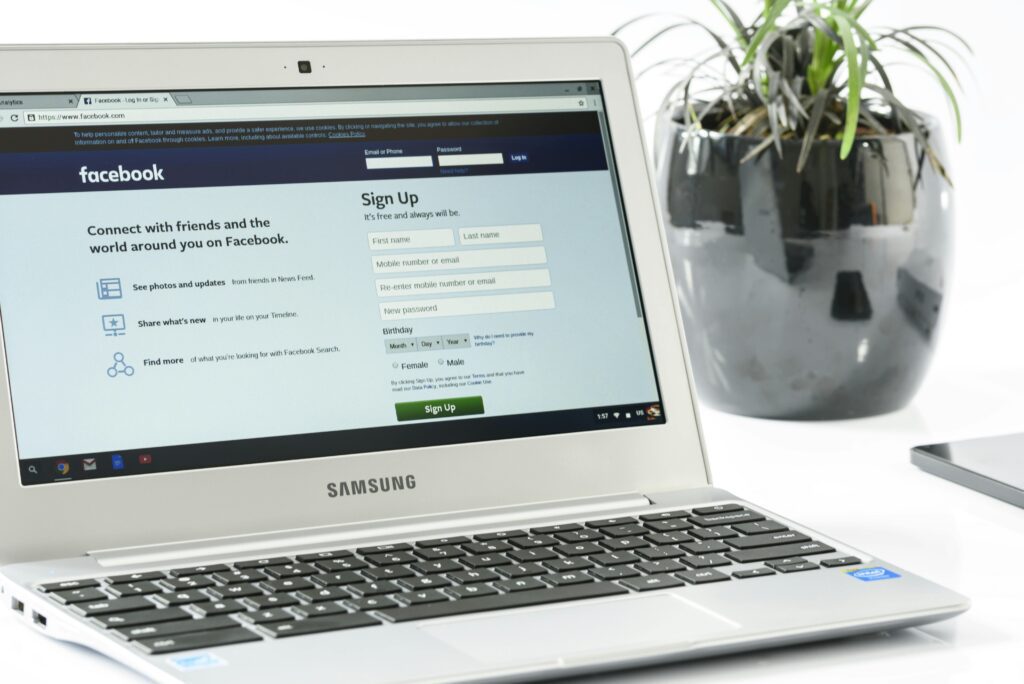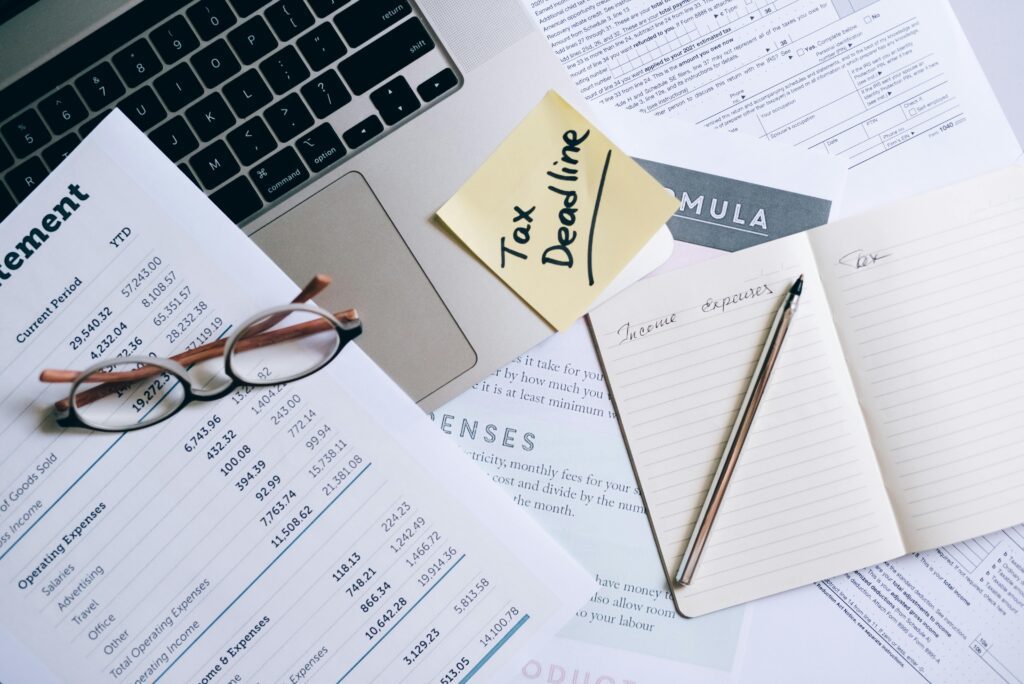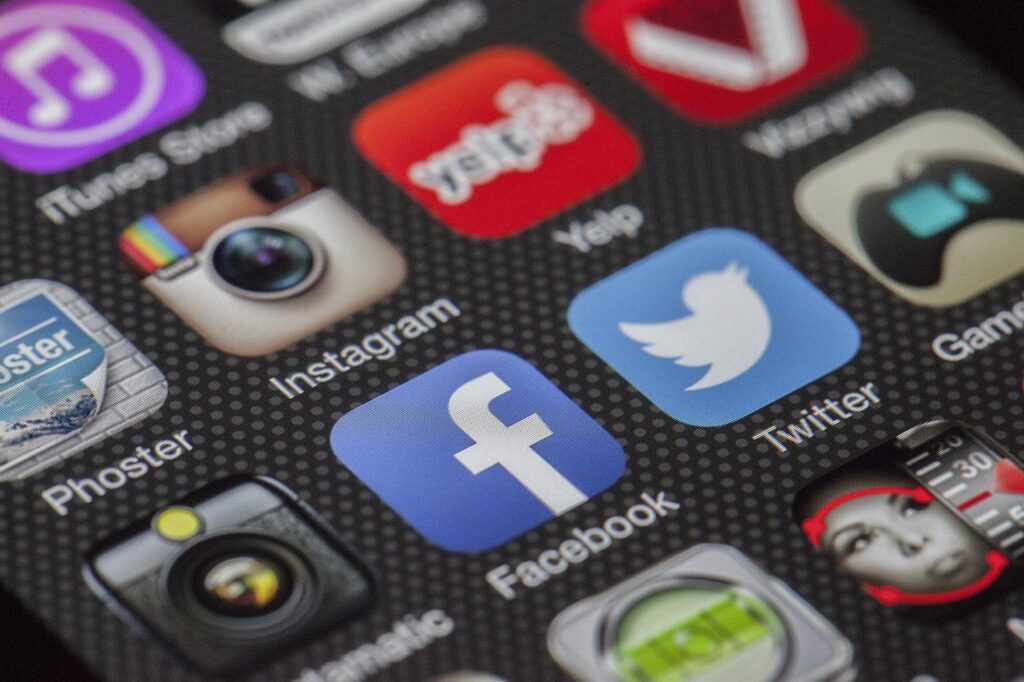In the competitive landscape of affiliate marketing, simply recruiting partners isn’t enough—the real challenge lies in activating them. According to recent industry data, while affiliate marketing spending is projected to reach $15.7 billion in 2024, the average activation rate across programs remains disappointingly low at just 10-30% [1]. This means that for every 100 affiliates who join your program, as few as 10 may actually drive meaningful results. By focusing on how to increase affiliate activation rate, you can unlock significant revenue potential without the need for additional recruitment efforts.
What Is Affiliate Activation Rate?
Affiliate activation rate is the percentage of partners who sign up for your program and subsequently take meaningful actions that generate value, such as submitting leads, registering deals, or making their first sale within a defined timeframe [2]. It serves as a critical metric that measures the effectiveness of your onboarding process and engagement strategies in converting passive affiliates into active contributors [3]. The formula for calculating activation rate is straightforward: divide the number of active partners by the total number of partners in your program, then multiply by 100 to get a percentage.
Core components of affiliate activation include:
- Defined Activation Criteria: Clear benchmarks that determine when a partner is considered “active,” such as completing their first sale or generating a minimum amount of revenue
- Onboarding Process: The structured workflow that introduces new affiliates to your program and equips them with necessary resources
- Engagement Mechanisms: Systems and communications that encourage ongoing participation and activity
- Performance Tracking: Tools and metrics that measure affiliate progress toward activation goals
Why Affiliate Activation Rate Matters
Increasing your affiliate activation rate is crucial for maximizing the return on your partner program investment. When more affiliates become active contributors, your program generates higher revenue without the additional costs of recruiting new partners. In today’s digital marketing landscape, this efficiency is particularly valuable as businesses allocate an average of 9% of their marketing budgets to affiliate programs—on par with email marketing and other significant channels [5].
Recent statistics highlight the importance of activation:
- According to a 2024 benchmark study, top-performing affiliate programs achieve activation rates of 50% or higher, while the industry average hovers between 10-30% [6]
- A 25% increase in activation rate can lead to a 34% growth in Monthly Recurring Revenue (MRR) over a 12-month period [7]
- In one documented case study, improving the affiliate activation process resulted in a 49% lead conversion rate, significantly outperforming initial program goals [8]
- The affiliate marketing industry is experiencing explosive growth, with spending expected to reach $27.7 billion by 2027, making effective activation increasingly important for competitive advantage [9]
- Programs with structured onboarding processes see 2.5 times faster user activation compared to those without formalized procedures [10]
The Psychology Behind Affiliate Activation Rate
Understanding the psychological principles that drive affiliate behavior is essential for how to increase affiliate activation rate [11]. Three key psychological factors significantly influence affiliate engagement and activation:
Reciprocity
The principle of reciprocity suggests that people feel compelled to give back when they receive something of value [12]. When applied to affiliate marketing, providing valuable resources, training materials, or personalized support creates a sense of obligation that motivates affiliates to reciprocate by actively promoting your products. Research shows that when businesses offer upfront value—such as exclusive content, tools, or early access to promotions—affiliates are significantly more likely to engage with the program and take meaningful actions [13].
For example, offering a comprehensive welcome kit with ready-to-use marketing materials creates an immediate sense of value that triggers the reciprocity response. This psychological principle explains why programs that invest in high-quality onboarding resources typically see higher activation rates than those that provide minimal support [14].
Fear of Missing Out (FOMO)
FOMO is a powerful psychological trigger that creates anxiety about missing opportunities that others might be enjoying [15]. In affiliate marketing, this manifests as concern about missing out on potential commissions or exclusive promotions. According to research, 60% of shoppers say that FOMO influences their purchasing decisions, and this same principle applies to affiliate behavior [16].
Effective activation strategies leverage FOMO by highlighting time-limited opportunities, showcasing success stories from active affiliates, and creating tiered commission structures that reward early or consistent participation [17]. When affiliates perceive that others are succeeding within your program, they become motivated to take action rather than miss out on potential rewards.
How Affiliate Activation Works
Increasing your affiliate activation rate involves a systematic approach that guides partners from initial sign-up through their first successful actions [18]. Here’s a breakdown of the process in six essential steps:
1. Initial Welcome and Orientation
The activation process begins immediately after an affiliate joins your program. Within 24 hours, send a personalized welcome email that sets clear expectations and outlines the path to success [19]. This communication should include access instructions for your affiliate portal, an overview of commission structures, and immediate next steps.
Real-world example: SocialBee implements a “quick-start” guide in their welcome email that covers essentials like accessing affiliate links, tracking systems, and ready-to-use promotional content. This approach resulted in 83% of newly onboarded affiliates driving at least one click, with 20% generating their first click ever [20].
2. Resource Provision and Training
The second step involves equipping affiliates with the tools and knowledge they need to succeed [21]. Create a centralized resource hub containing marketing materials, product information, and training resources that affiliates can access immediately.
Real-world example: Dustin Howes from Affistash recommends providing “lots of assets at the ready” in the first welcome message, including email swipes, banner ads, product one-sheets, and logos. This strategy enables affiliates to start promoting right away without delays that could diminish their initial enthusiasm [22].
3. Clear Goal Setting and Milestone Tracking
Establish specific, achievable milestones that define the path to activation [23]. These might include completing profile setup, accessing training materials, generating their first click, or making their first sale.
Real-world example: Looka discovered that partners who made their second sale were significantly more likely to remain active than those who made only one. Based on this insight, they restructured their program into three tiers: Tier C (under 2 sales monthly), Tier B (4-15 sales monthly), and Tier A (15+ sales monthly). This clear progression path increased activation by helping affiliates visualize success [24].
4. Personalized Engagement and Support
Implement a structured communication sequence that guides affiliates through each activation milestone [25]. This should include automated emails, check-in calls, and personalized support at critical junctures.
Real-world example: A CPA network implemented an onboarding chatbot in their webmaster’s dashboard that guided new users through placing their first referral link. This approach reduced the time between sign-up and activation by 2.5 times and increased conversion rates by 33% [26].
5. Incentivization and Reward Systems
Create incentive structures that reward early actions and progress toward activation goals [27]. This might include fast-start bonuses, increased commissions for initial sales, or exclusive promotions for new affiliates.
Real-world example: Kiyonna, a plus-size fashion retailer, designed an affiliate activation promotion offering a personal style consultation and $200 gift card to the affiliate who drove the most sales, plus a drawing for a $100 gift card among all affiliates who made at least one sale. This approach activated 83% of previously inactive affiliates, with 33% driving sales and 25% making their first-ever sale within the program [28].
6. Performance Analysis and Optimization
Continuously monitor activation metrics to identify bottlenecks and optimization opportunities [29]. Track key indicators like time to first sale, onboarding flow engagement, and milestone completion rates.
Real-world example: When Client X partnered with Acceleration Partners to improve their affiliate program, they established clear lead generation goals and tracking mechanisms. By analyzing performance data and optimizing their activation process, they exceeded their goal of driving 100 leads by 173%, achieving 273 leads with a 49% conversion rate [30].
Why Increasing Affiliate Activation Rate Is Effective
Focusing on affiliate activation delivers superior results compared to simply recruiting more partners [31]. Here are four key factors that make activation rate improvement particularly effective:
Cost Efficiency and ROI Optimization
Improving activation rates maximizes the return on your existing recruitment investments [32]. The cost of activating an already-recruited affiliate is significantly lower than acquiring a new one, making activation rate improvement one of the most cost-effective optimization strategies available.
Evidence shows that programs with high activation rates can achieve the same revenue with fewer affiliates, reducing management overhead and increasing profit margins [33]. For example, Acceleration Partners helped a client establish a new affiliate program that not only drove a 49% lead conversion rate but also made up for lost revenue from removing poor-quality affiliates within just three months—with new affiliate revenue representing 13% of total program revenue [34].
Compound Growth Through Engagement Momentum
When affiliates experience early success, they develop momentum that compounds over time [35]. Research indicates that affiliates who make their second sale within 30 days of their first are 3-5 times more likely to become long-term active partners.
This momentum effect creates a virtuous cycle where initial activation leads to increased engagement, higher earnings, and greater motivation to promote your products [36]. For instance, Looka discovered that partners who successfully made their second sale showed dramatically higher retention and activity rates, leading them to restructure their entire program around this critical activation milestone.
Enhanced Program Reputation and Recruitment Quality
Programs with high activation rates develop positive reputations that attract higher-quality affiliates [37]. When existing partners actively promote and succeed with your program, they create social proof that draws in more motivated affiliates.
Case studies show that programs with activation rates above 40% typically experience improved recruitment quality, with new affiliates arriving pre-motivated and ready to engage [38]. This creates a self-reinforcing cycle where activation success breeds further activation success.
Improved Data Collection and Program Optimization
Active affiliates generate valuable data that enables continuous program improvement [39]. By analyzing the behavior patterns of successfully activated affiliates, you can refine your onboarding process, identify effective promotional strategies, and optimize commission structures.
For example, when a CPA network implemented an improved activation process, they were able to collect detailed user properties that allowed them to segment their lead database and customize trigger messages for specific audiences. This data-driven approach resulted in 2.5 times faster user activation and a 33% increase in conversions [40].
How to Implement an Affiliate Activation Rate Improvement Strategy

Transforming your affiliate activation rate requires a systematic approach. Follow these seven steps to create a comprehensive activation strategy that converts passive partners into active revenue generators:
1. Define Clear Activation Criteria and Metrics
Begin by establishing specific, measurable criteria that define when an affiliate becomes “active”. This might be completing their first sale, generating a minimum number of clicks, or reaching a revenue threshold within a defined timeframe.
Implementation tip: Analyze your historical data to identify the actions that correlate most strongly with long-term affiliate success. For many programs, the second sale is a more reliable activation indicator than the first.
Recommended tools: Post Affiliate Pro or Tapfiliate for tracking affiliate milestones and setting activation triggers.
2. Create a Structured Onboarding Sequence
Develop a comprehensive onboarding workflow that guides affiliates from sign-up through their first successful actions. This should include welcome emails, resource provision, training materials, and clear next steps.
Implementation tip: Break down the activation process into small, achievable steps to prevent overwhelm. Each communication should focus on a single action the affiliate needs to take.
Recommended tools: Email automation platforms like Mailchimp or dedicated affiliate management software such as PartnerStack for creating automated onboarding sequences.
3. Build a Comprehensive Resource Hub
Establish a centralized location where affiliates can access all the tools, materials, and information they need to succeed. This should include marketing assets, product information, commission details, and educational resources.
Implementation tip: Organize resources by affiliate experience level and activation stage. New affiliates should immediately see the resources most relevant to getting started.
Recommended tools: LeadDyno or FirstPromoter for creating branded affiliate portals with integrated resource libraries.
4. Implement Tiered Commission Structures
Design a commission structure that rewards activation milestones and incentivizes continued engagement. This might include increased rates for affiliates who reach certain performance thresholds or bonuses for completing specific actions.
Implementation tip: Create visible “levels” or “tiers” that affiliates can progress through as they become more active. This gamifies the activation process and leverages the psychological principle of achievement motivation.
Recommended tools: UpPromote for implementing auto-tier commission structures based on performance metrics.
5. Establish Regular Communication Cadences
Develop a systematic communication plan that maintains engagement throughout the activation process. This should include scheduled check-ins, milestone celebrations, and proactive support at critical junctures.
Implementation tip: Segment your communication based on affiliate behavior and progress. Affiliates who haven’t completed their profile require different messaging than those who have made their first sale but haven’t yet reached their second.
Recommended tools: Rewardful or Everflow for automated affiliate communications tied to specific actions and milestones.
6. Leverage Social Proof and Success Stories
Showcase examples of successful affiliates to motivate new partners and demonstrate what’s possible within your program. This taps into both social proof psychology and FOMO to drive activation.
Implementation tip: Feature diverse success stories that affiliates at different levels can relate to. A new affiliate might be intimidated by top performers but inspired by someone who recently made their first few sales.
Recommended tools: Tapfiliate or Post Affiliate Pro for creating affiliate leaderboards and showcasing success metrics.
7. Implement Continuous Testing and Optimization
Establish a system for regularly analyzing activation metrics and testing improvements to your process. This should include A/B testing different onboarding sequences, resource formats, and incentive structures.
Implementation tip: Focus on optimizing one stage of the activation funnel at a time, starting with the areas showing the highest drop-off rates.
Recommended tools: Scaleo or PartnerStack for advanced analytics and A/B testing capabilities within your affiliate program.
Advanced Strategies for Maximizing Affiliate Activation rate
Beyond the fundamental implementation steps, these advanced strategies can further enhance your activation rates and program performance:
Personalized Activation Paths Based on Affiliate Segments
Not all affiliates are the same, and their activation needs vary based on their experience, traffic sources, and promotional methods. Develop segment-specific activation paths that address the unique needs of different affiliate types.
For content creators, focus on providing in-depth product information and storytelling resources. For coupon and deal affiliates, emphasize exclusive promotions and conversion-focused assets. For influencers, provide personalized support for creating authentic product integrations.
Research shows that personalized onboarding sequences can increase activation rates by 30-50% compared to one-size-fits-all approaches. This targeted strategy acknowledges the diverse needs of your affiliate base and provides tailored support for each segment’s success path.
Psychological Trigger Implementation
Strategically incorporate psychological triggers throughout your activation process to motivate affiliate action:
- Reciprocity: Offer unexpected bonuses or resources after affiliates complete initial steps to trigger the reciprocity response and motivate continued engagement
- Scarcity: Create limited-time activation bonuses or exclusive opportunities for new affiliates to leverage the scarcity principle
- Social Proof: Showcase real-time notifications when affiliates make sales or reach milestones to demonstrate program activity and success
- Loss Aversion: Frame inaction as a missed opportunity by highlighting the commissions affiliates could lose by not activating quickly
Research indicates that programs incorporating these psychological principles see activation rates 40-60% higher than those focusing solely on rational benefits. By understanding and leveraging these fundamental human motivations, you can create an activation process that feels intuitive and compelling.
Community-Based Activation Acceleration
Build a community environment that supports and accelerates affiliate activation through peer motivation and knowledge sharing. This might include:
- Creating a private community for new affiliates to connect and share early wins
- Implementing a mentorship program pairing new affiliates with established partners
- Hosting regular virtual events focused on activation milestones and success strategies
- Developing collaborative challenges that encourage group activation progress
Programs with strong community components report activation rates up to 70% higher than those without peer support systems. The social accountability and shared learning environment create powerful external motivation that complements your formal activation processes.
Conclusion
Increasing your affiliate activation rate represents one of the most impactful optimizations you can make to your affiliate marketing program. By transforming passive sign-ups into active, revenue-generating partners, you can dramatically improve program performance without additional recruitment costs. The key takeaways from this exploration include:
- Activation rate is a critical metric that measures program health and efficiency, with top-performing programs achieving rates of 50% or higher compared to the industry average of 10-30%
- Psychological principles like reciprocity, FOMO, and social proof play fundamental roles in motivating affiliate activation and can be strategically leveraged throughout your onboarding process
- A structured, milestone-based activation approach with clear criteria, comprehensive resources, and personalized support creates the optimal path for affiliate success
In today’s competitive digital marketing landscape, where affiliate spending is projected to reach $27.7 billion by 2027, the programs that excel will be those that master the science and art of affiliate activation. By implementing the strategies outlined in this article, you can transform your affiliate program from a collection of passive partners into a dynamic network of active revenue generators.
Remember that activation is not merely a technical process but a human one—it’s about creating the conditions where affiliates feel supported, motivated, and equipped to succeed. When you get this right, you don’t just increase a metric; you build relationships that drive sustainable growth for both your business and your affiliate partners.
Frequently Asked Questions
What is a good affiliate activation rate benchmark?
Industry benchmarks indicate that a good affiliate activation rate is around 10% or more, with top programs achieving rates of 50% or higher based on network studies [1]. A global SaaS survey reported an average activation rate of 34% and a median of 25%, highlighting that most programs operate between 10% and 30% [2]. Activation rate measures the percentage of affiliates who begin generating leads, deals, or sales within a defined period and serves as a key health metric for partner programs. Maintaining activation above these benchmarks can significantly improve partner productivity and overall program profitability.
How do I calculate my affiliate activation rate?
To calculate your affiliate activation rate, divide the number of affiliates who complete a predefined milestone (such as making a first sale or submitting a lead) by the total number of newly onboarded affiliates, then multiply by 100 to express it as a percentage. For example, if 200 out of 1,000 new affiliates generate a first sale, your activation rate is 20% [4]. Activation milestones vary by program but often include tasks like signing up for a trial, submitting a lead, or making an initial sale. Consistently tracking these metrics enables program managers to identify drop-off points and optimize onboarding workflows.
Why do most affiliate programs have activation rates below 30%?
Most programs see activation rates below 30% because they underinvest in structured onboarding and resource accessibility, leading to delays in affiliates’ first productive actions. Industry data shows average activation rates range between 10% and 30%, with a median of 25% for SaaS programs, underscoring common engagement challenges [1][2]. Additionally, 50% of affiliate traffic originates from mobile devices, so lacking mobile-optimized assets can introduce friction that reduces activation rates [5]. Without tailored training, clear milestones, and seamless UX, many partners disengage before reaching activation thresholds.
How long does it typically take for an affiliate to generate their first sale?
Affiliates can expect to generate their first sale typically within 30 days to six months of joining a program, based on their marketing strategies and traffic sources [6]. Beginners relying on organic content often require three to six months to see real results, while those utilizing paid ads or email campaigns frequently achieve their first commission within 90 days [6]. Establishing clear first-sale milestones and providing targeted assets and guidance can help partners reach activation goals more swiftly. Monitoring these timelines enables program managers to optimize onboarding flows and improve overall activation rates.
Which tactics have proven to boost affiliate activation rates?
Integrating video content has been shown to boost affiliate activation conversion rates by 49%, offering immersive product insights that drive partner performance [7]. Campaigns leveraging user-generated content see a 28% uplift in conversion, highlighting the power of authentic social proof in motivating affiliates [7]. Collaborating with influencers further amplifies activation, with programs reporting a 46% increase in sales following influencer partnerships [7]. Ensuring mobile optimization is crucial, as 50% of affiliate traffic comes from smartphones and mobile-friendly experiences yield 64% higher conversion rates [5][7].
read more
Boost Revenue Now: Essential Advertising KPIs Every CEO Uses
Advertising Automation KPIs Every Marketer Should Track Picture this: companies are crushing it with $5.44 back…
10 Game-Changing Facebook Ads Workflows for 2025 Growth
Picture this: 76% of businesses using Facebook ads workflows slash their campaign management time by 30%….
10 Deadly Retargeting Mistakes Business Owners Make
Did you know that retargeting campaigns can boost conversion rates by up to 150%? Yet many…
10 Invoice Automation Workflows That Skyrocket Cash Flow Now
Are you still stuck with paper invoices and typing in data by hand? Here’s a…
Revolutionary: 10 Social Media Automation Strategies Crushing Competition
Imagine this: you’re staring at your calendar, heart racing as you realize your biggest event…
10 Hidden Price drop Automation Secrets Competitors Don’t Know
Did you know that 77% of businesses using marketing automation see increased conversion rates, while…
- PartnerStack. “Activation Rate Definition & Meaning.” PartnerStack, 2000.
- Cello.so. “What is an Activation Rate?” Cello.so, January 3, 2025.
- Kiflo PRM. “Activation Rate – Definition.” Kiflo PRM.
- Impartner. “What Is Activation Rate? [Definition + Meaning].” Impartner, October 5, 2023.
- Adasight. “Activation Rate – Glossary.” Adasight.
- Tapfiliate. “15 steps to improve your conversion rate with an Affiliate Program: Conversion Rate Optimization Strategies.” Tapfiliate, January 3, 2024.
- Reditus. “SaaS Affiliate Onboarding Done Right: Insights From Experts.” Reditus, November 26, 2024.
- Coupon Affiliates. “24 Most Interesting Affiliate Marketing Statistics for 2024.” Coupon Affiliates, December 16, 2023.
- Cellxpert. “Psychology & Customer Behaviour in Affiliate Marketing.” Cellxpert, June 9, 2025.
- Ahrefs. “58 Affiliate Marketing Statistics for 2024.” Ahrefs, October 30, 2024.
- WinSavvy. “2024 Affiliate Marketing Industry Statistics and Insights.” WinSavvy, October 16, 2024.
- UK-Plus. “Affiliate Internet Marketing Statistics: The Ultimate Data Guide For…” UK-Plus, 2000.
- Partnero. “21 Affiliate Marketing Benchmarks & KPIs – Partnero.” Partnero, January 1, 2025.
- Adam Enfroy. “The Ultimate List of Affiliate Marketing Statistics for 2024.” Adam Enfroy.
- Partnero. “21 Affiliate Marketing Benchmarks & KPIs | Partnero.” Partnero, January 1, 2024.
- PartnerStack. “Partner Program KPIs: The Metrics You Should Measure and Optimize.” PartnerStack, August 1, 2022.
- John Acus. “Psychology Principles Every Affiliate Marketer Should Know.” John Acus, February 1, 2025.
- Coolest Gadgets. “Affiliate Marketing Statistics By Most Used Channels, Income Level, Mobile Usage And Country.” Coolest Gadgets, December 30, 2024.
- Rewardful. “Rewardful – Affiliate Software for SaaS.” Rewardful, May 22, 2025.
- Post Affiliate Pro. “Post Affiliate Pro: Best Affiliate Software Platform.” Post Affiliate Pro, April 3, 2025.
- State of Digital Publishing. “Top Affiliate Networks and Platforms to Boost Your Revenue in 2025.” State of Digital Publishing, March 13, 2025.
- Tapfiliate. “Easy-to-Use Affiliate Marketing and Management Software.” Tapfiliate, June 4, 2025.
- Khris Digital. “13 Best Affiliate Management Software System (Revealed).” Khris Digital, September 21, 2024.
- MyLead Global. “Six Essential Affiliate Marketing Email Templates to Use in 2024.” MyLead Global, March 28, 2025.
- Acceleration Partners. “AP Case Study: New Affiliates Program Drives High-Value Leads.” Acceleration Partners.
- Shopify. “16 Best Affiliate Marketing Software to Manage and Track (2025).” Shopify, April 15, 2025.
- Einstein Marketer. “Social Proof in Marketing: I Stood In The Street To Prove The Theory.” Einstein Marketer, February 1, 2021.
- Mailmodo. “16 Free and Paid Affiliate Marketing Platforms.” Mailmodo, January 18, 2025.
- Pushwoosh. “User Activation: Get a 34% MRR Increase from Improving One Metric.” Pushwoosh, October 26, 2023.
- Practical Ecommerce. “2 Affiliate Promotion Case Studies.” Practical Ecommerce, June 20, 2022.
- Dashly. “Case study: 2,5 speed up in user activation.” Dashly, November 22, 2022.
- Neil Patel. “6 Advanced Steps for Doubling Your Activation Rate.” Neil Patel, June 22, 2021.
- Super.so. “100+ Onboarding Email Sequence.” Super.so.
- Scaleo. “10 Effective Tactics To Get Affiliates To Promote Your Product Or Brand.” Scaleo, June 5, 2025.
- Buyapowa. “The Science of Reciprocity in Reward and Referral Marketing.” Buyapowa, May 15, 2025.
- ReferralCandy. “How To Use Reciprocity In Marketing (+10 Killer Examples).” ReferralCandy, June 16, 2025.
- Post Affiliate Pro. “10 psychological principles to improve your affiliate marketing strategy.” Post Affiliate Pro, September 8, 2022.
- NID Academy. “The Psychology Behind Successful Affiliate Marketing.” NID Academy.
- Fractal Max Agency. “How to Use FOMO in Affiliate Marketing: Complete Guide.” Fractal Max Agency, May 8, 2025.







